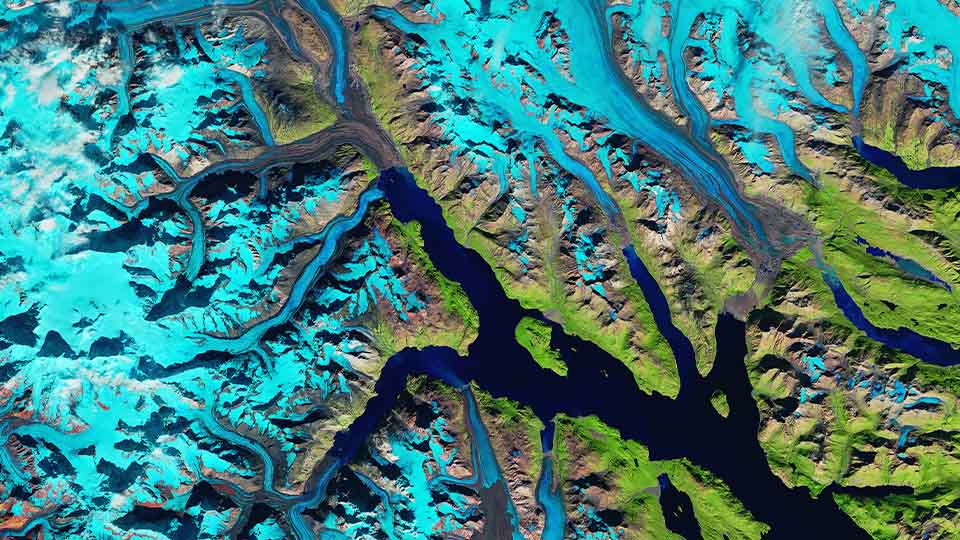Geography and geospatial science
Understanding the intricate connection between people and the planet can give you the power to help create a better world. Pursuing a geography and geospatial science bachelor’s degree online from Oregon State University will equip you with expertise in physical and human geography, geospatial technology and spatial reasoning to address global challenges like climate change, natural resource management and urban planning.
Learn how to harness the power of big data as you use GIS, remote sensing and geovisualization tools to develop transferable skills in data analysis, problem-solving and effective communication for diverse audiences. When you graduate, you’ll be ready to lead in addressing complex, global issues where geography and technology meet — in a wide variety of fields including transportation, public safety, land use and national defense.
Skills you’ll gain in OSU’s online geography and geospatial science degree program
As a student in Oregon State’s online geography and geospatial science degree program, you’ll gain the in-demand skills you need to stand out in the job market and level up your career. You’ll learn from expert Oregon State faculty who have real-world experience in the field.
- Geographic information systems
- Remote sensing
- Geovisualization and cartography
- Geographic field research
- Physical geography
- Web mapping
- Geospatial analysis
Program details
The online coursework in Oregon State’s geography and geospatial science program will provide knowledge that can put you at the forefront of major global initiatives and issues. You’ll study topics that can help you solve business, land use, natural resource planning, transportation, natural hazards and public safety challenges worldwide.
The online geography and geospatial science program is offered by Oregon State’s College of Earth, Ocean, and Atmospheric Sciences.
Degree requirements
A minimum of 180 quarter credits — at least 60 of which must be upper-division credits — are required to graduate with your degree in geography and geospatial science, including:
- OSU’s Core Education
- Major requirements: Geography and geospatial science

Additional program features
Experiential learning
All geography and geospatial sciences major students are required to complete 9 credits of experiential learning. More information is available within the program curriculum on OSU's academic catalog.
Transfer credits
Some degree requirements may be transferred from other institutions. Please note that a minimum of 45 credits of the last 75 credits in this degree program must be completed at Oregon State (online or on campus) to meet the academic residency requirement.
Previously earned credits must be reviewed upon admittance to OSU for appropriate articulation. Additional information about transferring credits is available through OSU’s Transfer Credit Central.
Pursue an honors degree online
As an undergraduate degree-seeking student, you can apply to earn an honors degree online in your academic major. Earning this prestigious degree gives you the opportunity to collaborate with faculty on research, complete a comprehensive thesis experience and engage in co-curricular activities.
Start on the path to a master’s degree or graduate certificate
Oregon State also delivers a master’s degree in geography and geospatial science online, as well as a Graduate Certificate in Geographic Information Science online. Earning your bachelor’s in geography and geospatial science is a natural gateway for you to apply to graduate school and pursue a master’s degree or an advanced certificate in a related field.
Computer software requirements
Three required major courses utilize ArcGIS Pro software that is not Mac-compatible. Your PC must meet the system requirements listed on the ArcGIS Pro website, or you may use the CEOAS Virtual Desktop system instead.
Explore certificates and microcredentials
You can gain highly specialized skills that are in demand by employers — and do it with less of a time and financial commitment — when you earn a certificate or microcredential online with Oregon State. Choose from a large collection of short-form offerings that can help you upskill quickly.
Careers related to geography and geospatial science
The knowledge you acquire in Oregon State’s online geography and geospatial science degree program will help you fill in-demand jobs in the global marketplace. As a leader in this area, you’ll enter the workforce ready to provide insights in economic sectors that need geography, computer mapping and analysis experts.
Job market outlook
Use the interactive tool on this page to discover employment trends, top occupations and salary details for professionals who have skills related to geography and geospatial science. Please be aware that completing a program related to the job market information shown here does not guarantee employment or a specific salary.
Request
information
To ensure that you receive emails from us, please add "ecampus@oregonstate.edu" and these domains to your safe senders list: “@oregonstate.edu,” “@discover.oregonstate.edu” and “@email.oregonstate.edu.”
† All mobile information you share will remain confidential and will never be given to external sources. Any costs associated with receiving a text message are the responsibility of the individual receiving the message. Opting in to this mobile text messaging service from Ecampus is free of charge, however, message and data rates may apply from your wireless carrier.
Contact
Our enrollment services team can help answer questions about online learning at Oregon State Ecampus and how to get started.
8 a.m-4 p.m. PT Monday-Friday
Contact Ecampus or book an appointment
To ensure that you receive emails from us, please add "ecampus@oregonstate.edu" and these domains to your safe senders list: “@oregonstate.edu,” “@discover.oregonstate.edu” and “@email.oregonstate.edu.”





